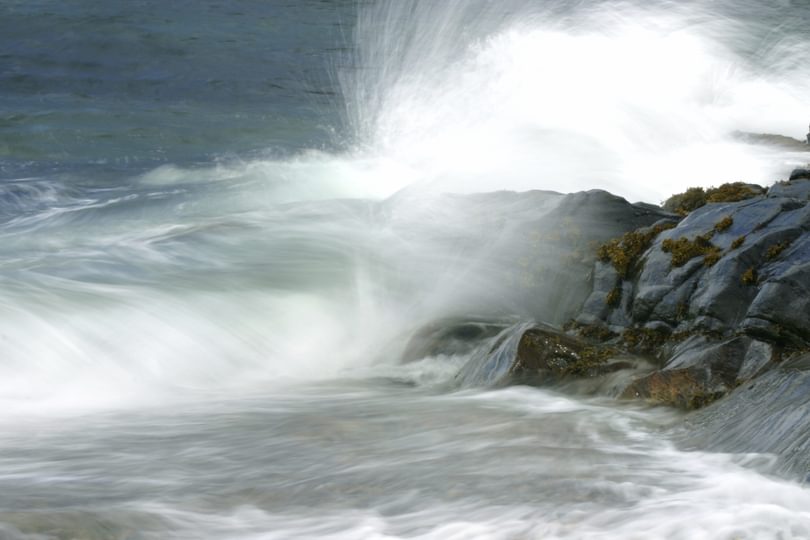
Scientists, engineers and researchers from around the world gathered in Oxford to discuss technical issues in tidal stream power at the 2015 Oxford Tidal Energy Workshop on 24 and 25 March.
The event, sponsored by the Oxford Martin School and organised by Professor Richard Willden and Dr Christopher Vogel of the Oxford Martin Programme on Globalising Tidal Power Generation, was also attended by representatives from industry, funding agencies and research councils.
In the following Q&A, Christopher Vogel explains the potential of new tidal power technology, Oxford’s role in tidal power research, and what progress is needed for tidal power to begin making a significant contribution to our energy resources.
What is the current state of tidal power generation and research?
There are two ways to harness tidal power. The first is to extract energy from the difference in sea level between high and low tides. Water is allowed in behind a barrage (dam) as the tide rises, held until a sufficiently large difference in the water height behind the barrage and in the open sea, at which point water is allowed to flow out of the barrage through turbines, generating electricity in a similar manner to a hydroelectric power plant. This is a well established technology which has been employed in the Rance estuary in France since the 1960s.
The second is to extract energy from the movement of water as the tide moves in and out, which is rather similar to how wind turbines work. This is a newer technology than tidal barrages, and the main research area in tidal energy that we are engaged in at Oxford. A number of devices are being tested around the UK, and commercial deployments are being designed, although not yet operational.
One of the key differences between tidal barrages (the first method) and tidal stream turbines (the second method) is that, for a tidal barrage to work, the entire barrage has to be constructed before any power can be generated, otherwise the water just flows through the gap! This is obviously very expensive and time consuming, as well as bringing with it significant environmental impacts. Tidal current turbines can be installed in stages, and provide electricity to the national grid as soon as they are connected, and therefore involve a smaller capital outlay. Hence tidal current devices have attracted a lot of interest.
A significant recent development is the UK government’s allocation of £1 billion to 'open negotiations' on a tidal lagoon project in Swansea in this year's budget. This is tidal barrage technology, but demonstrates that the government is seriously looking at tidal power schemes. There are proposals currently being investigated for tidal current turbines in the Pentland Firth.
Why is the UK such a good place for tidal energy?
The UK, situated on the European continental shelf, is particularly well situated for exploiting tidal energy for two main reasons. As the tide sweeps in from the Atlantic Ocean to the North Sea, it is funneled through the Pentland Firth, which has some of the highest tidal flow speeds in the world, which is ideal for tidal stream turbines. The UK also lies at just the right distance on the continental shelf from the Atlantic Ocean, so that the tides in the ocean are resonant with the tides we see at the coast, making them very large. The Bristol Channel/Severn estuary have the second highest tidal range (height difference between high and low tide) in the world, at about 13 metres.
What contribution is Oxford making to tidal energy research?
The feedbacks between energy extraction and the tidal resource are much more signficant in tidal energy than wind energy, which means that it's necessary to understand both the smallest scale problems of device design and performance, all the way up to how large arrays of tidal turbines will interact with the tides around the UK. The research at Oxford spans this entire spectrum, which allows us to develop methods to understand the impacts of energy extraction and feed that back into designing more efficient devices. The Oxford group really is at the forefront of analytical and computational modelling of the large multi-scale problem of tidal stream energy extraction, and the development of novel technologies specifically tuned to extract tidal energy efficiently and thus as economically as possible.
What is needed for tidal energy to become a major contributor to our energy supplies?
Tidal current energy is a relatively new technology, and so is at a similar stage of development as wind energy was thirty years ago. Devices need to be designed, built, and deployed, so that turbines can be tested in small arrays, and lessons learnt for developing next generation turbines. The interactions between the hydrodynamic forces on the turbines, and the structural design of blades needs to be addressed, and better tools need to be developed to encapsulate all the different scales of feedback between the tidal resource and the turbines themselves to enable efficient turbines to be designed and their performance assessed.